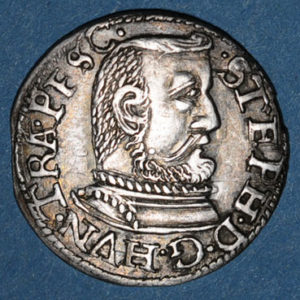Keszthely

Keszthely was an important castle of the Borderland near Lake Balaton. The castle had already two chapels after the Mongol invasion in 1247, dedicated to St. Lőrinc and St. Márton. The city’s landlord was Laczkffy István in 1386 who built its church and the Franciscan Monastery.

Watch this video and see what the castle may have looked like in Fodor Zsolt’s animation:
https://www.youtube.com/watch?v=e-z6GxPb4_Y

The city was an “oppidum” in 1432 which was gifted to Pethő László by King Zsigmond. The monastery was turned into a fort after the battle of Mohács in 1526, thanks to Pető János of Gerse. A chronicle mentioned that he had all the doors of the monastery walled in and used enormous timbers to build a palisade around it.

The castle was already functioning in 1550. Its captain was Sovics Mihály in 1558. The famous borderland warrior, Gyulaffy László was sent to the castle to report about its building’s condition to the War Council of Vienna in 1561. A few years later, Giulio Turco, an Italian military engineer was given command over the construction.
The castle was not a very serious fort, it could not have withstood a systematic siege. The king paid 50 riders and 100 infantrymen to guard it. The city of Keszthely was raided and plundered by the Ottoman Agha of Koppány in 1589 who could not take the castle, though.

After this, the inner city had itself surrounded by a palisade and a moat. The outskirts of the city thus remained to the peasants’ and they had to pay taxes, unlike the inhabitants of the inner city. The defenders of Keszthely (led by Captain Perneszi György), sided with Prince Bocskai in 1605 and didn’t accept the truce between Bocskai and the Habsburgs so the king had to take the castle by siege in 1608. You can read more about Prince Bocskai István here:
https://www.hungarianottomanwars.com/essays/prince-bocskai-istvan/

Let me share with you the research of Kiss Csaba about the strange siege of Keszthely in 1609:
The strange siege of Keszthely
We may know more about the uprising of the mercenaries in Pápa castle in 1600 when the soldiers rebelled and occupied the castle, and later they were driven out only by a hard siege laid by the Imperial troops. It is lesser known, though, that there was a similar uprising and siege in Keszthely castle between 1605 and 1609.


Within weeks, however, the fortunes of war turned and the troops of the ruling king and the Hungarian lords loyal to him recaptured the lost Transdanubian territories. Keszthely was forced to surrender by the troops of Török István of Enying, the Chiefl Captain of Pápa castle, and to return to the allegiance of the crowned Habsburg king.
The new captain of Keszthely was Bakacs Sándor (Bakács, Bakach) of Szentgyörgyvölgy, who, in addition to his office, was also the owner of most of the estates around Keszthely castle through his wife Pethő Kata of Gersei and had applied for the captaincy several times before. However, he could not even take up his new post – as he was involved in the preparation of the action against the fortress of Kiskomárom, which remained on Bocskai’s side, and the Ottoman auxiliaries stationed there – while the war situation suddenly turned again.

The troops of the Sanjak Bey of Koppány castle stationed near Kiskomárom suddenly launched an attack and together with the Hungarian forces of Némethy Gergely, with their mere presence, forced several smaller Borderland forts to Bocskai’s side again, including Keszthely on 20 August 1605 – for the second time. The smaller part of the garrison, led by Fejér Mihály, left the garrison and sided with the lawful captain, Bakacs Sándor, while the larger part of the garrison and the hundred infantry and fifty cavalrymen, who were led to Keszthely on the proposal of Nádasdy István, remained (at least in principle) loyal to Bocskai until the Peace of Vienna in June 1606, and were mainly engaged in raids, robbery and pillaging in the surrounding area and Austrian territories.

After the Peace of Vienna in June 1606, however, a strange situation arose in Keszthely. According to the terms of the peace, the fortresses and goods that had fallen into the hands of the rebels had to be returned to the crown within a short time. However, the guards of Keszthely resisted the surrender and refused to let Captain Bakacs Sándor in. For this reason, at the end of May 1606, Archduke Matthias was forced to order that Captain Bakacs Sándor and the new ‘Keszthely’ garrison at his disposal be temporarily stationed at Szigliget Castle and to order the resisting Keszthely soldiers to obey.







Ritucim71)
Sources: Kiss Csaba:
Dear Readers, I can only make this content available through small donations or by selling my books or T-shirts:
Please, feel free to support me with a coffee here:
You can check out my books on Amazon or Draft2Digital, they are available in hardcover, paperback, or ebook:
https://www.amazon.com/dp/198020490X or at https://books2read.com/b/boYd81

My work can also be followed and supported on Patreon: Become a Patron!http://Become a Patron!

[wpedon id=”9140″]

https://hungarianottomanwars.myspreadshop.com/all





















